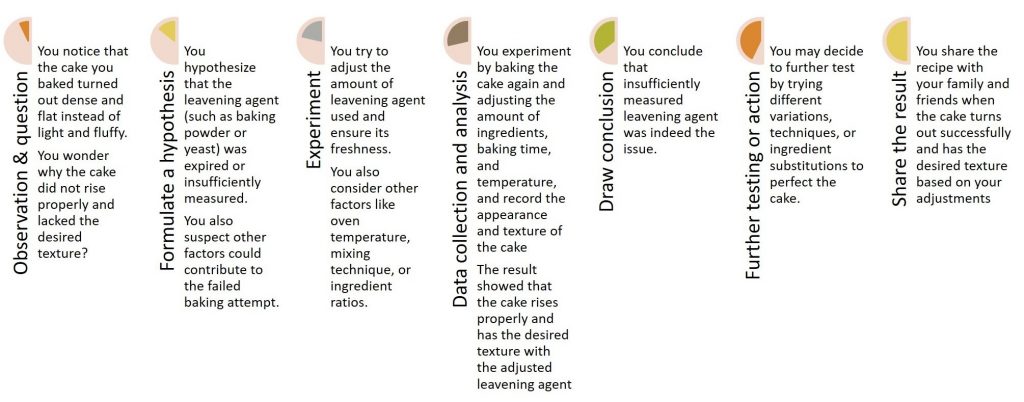Introduction to Scientific Method in Research
“Science is much more than a body of knowledge” – Carl Sagan
Science is more than just facts or knowledge; it is a way of understanding the world. Every day, new evidence and insights emerge from undertaking research. The scientific method is a systematic process and set of procedures that help us do research. The general steps of the scientific method in research are usually established in six or seven steps, as shown below:
- observing a phenomenon or a problem that you wish to investigate,
- formulating a research question based on existing knowledge,
- developing a hypothesis which is an educated guess or tentative explanation for the question,
- designing a study and collecting relevant data,
- analyzing data using appropriate statistical analysis,
- interpreting the results and critically evaluating the findings,
- concluding and sharing the findings.
It should be noted that the exact steps and order of the scientific method may differ based on the research topic or field of study. For example, a hypothesis is generally linked with hypothesis-driven research, it may or may not be required in descriptive or exploratory research. Research is an iterative process as illustrated in Figure 1.1; steps may overlap or be revisited as new information and insights emerge. Flexibility and adaptation are essential throughout the research journey.

Figure 1.1: The scientific method is an ongoing process with well-defined steps to standardize how scientific knowledge is gathered through a logical, rational problem-solving method. Source: “1.2 The Process of Science” by OpenStax is licensed under CC BY 4.0
The scientific method emphasizes critical thinking and evidence-based reasoning. It can be used not only in research but also in everyday decision-making and problem-solving. Let’s look at the various circumstances in which scientific method is employed in everyday life. These scenarios illustrate that we indeed apply the scientific method in our daily lives without noticing it (Figure 1.2).


Figure 1.2: A broken car and a failed baking attempt illustrate the use of the scientific method to solve problems in our daily lives.
Watch this video to learn about the term “research” and the variety of ways in which we engage with research on a daily basis [3 mins, 42 sec]
“Defining Research | Critical Concepts in Academic Research” by Odyssey Learning Project is licensed under CC BY 4.0
By the end of this textbook, you will have a clear understanding of the scientific method and its application in conducting research. The following chapters are covered in this textbook:
You will recognize the importance of making observations, and know how to formulate research questions, testable hypotheses, and specific objectives for your study. Furthermore, you will know how to design and implement a study to collect relevant data, analyze and interpret findings, and draw valid conclusions. Finally, you will understand how to share your research discoveries with the scientific community and the general public. This crucial knowledge will serve as a strong foundation for you to kick-start your research. Still, this textbook is intended as an introduction to student scientists who are new to research. There are a myriad of resources available for more in-depth information about conducting research in your particular field of study.
Systematic investigation and study of a particular topic or issue to discover new knowledge, validate existing knowledge, or solve problems.
A systematic and iterative approach used by scientists to investigate and understand the natural world. It involves making observations, formulating hypotheses, conducting experiments, analyzing data, and drawing conclusions.
A clear, concise, and specific question that guides the research process and defines the focus of the study.
An assumption based on sound evidence (educated guess) assumed for the sake of testing its soundness.
Information collected through observation, measurement, or experimentation.
The use of statistical methods to analyze and interpret data collected from experiments or studies.
The active acquisition of information from a primary source, either through our senses, or data recorded during an experiment using scientific tools and instruments
A specific and measurable goal or outcome that the problem statement seeks to achieve. Objective provide a clear direction for the research or problem-solving process.
A summary or final statement that is drawn from the evidence, analysis, and findings presented in a research study or argument.

